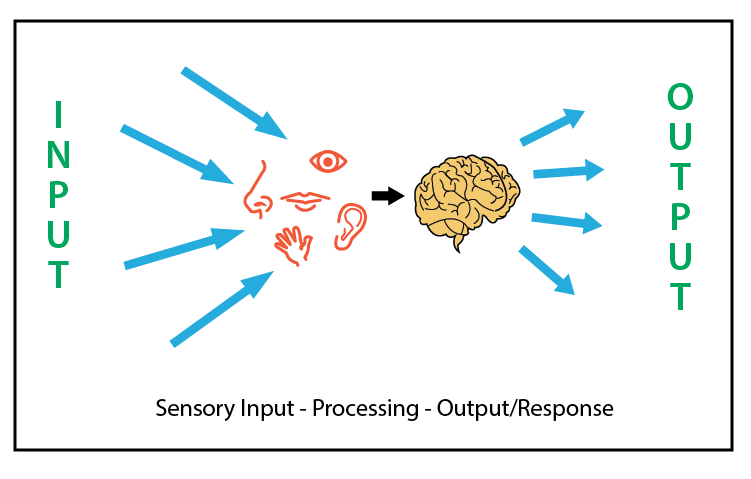The Sensory Motor Pathway
The sensory motor pathway is the trajectory a sensory takes from being inflicted on the body to its' processing in the brain and body. Each of the five senses is introduced to the body in a different way: sight for the eyes, smell for the nose, taste for the tongue, touch for any appendages, and hearing for the ears. One the sense is detected by the body, how it travels through is differently. For example, according the Janet Nay Zadina book Multiple Pathways to the Student Brain (2014), "The eyes are the conduit for visual information sent to the thalamus, the relay station. The thalamus evaluates the information. If it is recognized as visual stimuli, it is sent to the visual cortex in the back of the brain for further processing." (pp. 36) Like vision, the other senses follow a similar path. Everything is relayed at the thalamus to determine what type of stimuli it is. If you look at the visual below, you will see that the thalamus is located at the center of all of the lobes. The lobes gather the information, which is sent to the thalamus, which then sends it back to the lobes. Further analysis of the Zadina text shows that the intake of sensory information directly affects how a child learns, with visual intake and visual learning being the most prevalent of the senses. Educators need to be aware of how sensory input and output because it has a large impact on how a child learns. If you have a student that has stronger auditory input and output, there is a strong chance the child may be an auditory learner. These are things that need to be constantly monitored so that children experience the most of their learning time.

Resources:
Zadina, J.N. (2014) The sensory motor pathway. In Multiple pathways to the student brain (pp. 35-61). San Francisco, CA: Jossey-Bass.

Comments
Post a Comment